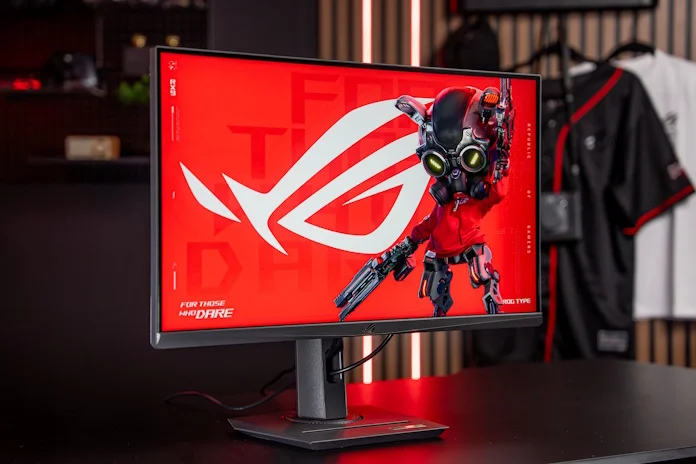When you shop for a gaming monitor or gaming laptop, you’ll see a few different panel types. IPS, VA, TN, and Mini-LED are all types of LED/LCD displays, while OLED is a newer type of panel with game-changing image quality. But what’s the actual difference, and is a more premium monitor worth springing for? Let’s talk about your options.
The difference between LCD and OLED technology
Liquid Crystal Displays (LCDs) have been around for quite some time, and while there are varying types of LCD panels, they all work in similar ways: an LED backlight shines through a layer of liquid crystals, which shift to allow more or less of that light to pass through. Color filters with red, blue, and green subpixels allow the display to create millions of different colors, giving you a nice, crisp image.
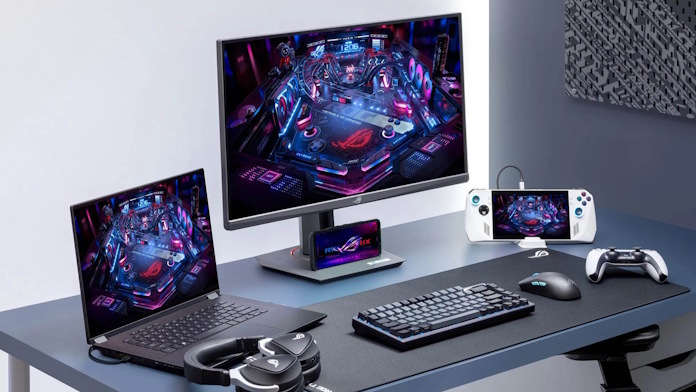
You’ll find LCD panels among many of our ROG Strix and ASUS TUF Gaming monitors, as well as our ROG Strix gaming laptops. Most LCD monitors use IPS displays, though some LCDs may use VA type panels (which features darker blacks) or TN panels (which are ultra-fast for competitive gaming). Some high-end LCD displays, including those in our ROG Strix SCAR laptops, feature Mini-LED backlight arrays, which use an array of LEDs with zones that can dim down for deeper blacks and brighter highlights.
OLED, on the other hand, stands for Organic Light-Emitting Diode, and these panels are structured very differently. Instead of one large LED backlight that shines through a layer of shifting pixels, each pixel is made up of its own incredibly tiny LEDs, each of which can produce their own light. As a result, each individual pixel can also be turned off entirely, leading to even deeper black levels.
OLED displays have incredibly deep black levels that make the picture pop
And this is the primary benefit of OLED displays: while black pixels on LCD monitors still have a bit of light shining through (making them look dark grey), OLED displays have complete control over every single pixel, giving you deep, inky blacks alongside bright, colorful highlights. The bigger the difference between black levels and highlights, the punchier the image looks. If you haven’t seen an OLED display in person, the difference really is night and day, even for those who wouldn’t consider themselves videophiles.
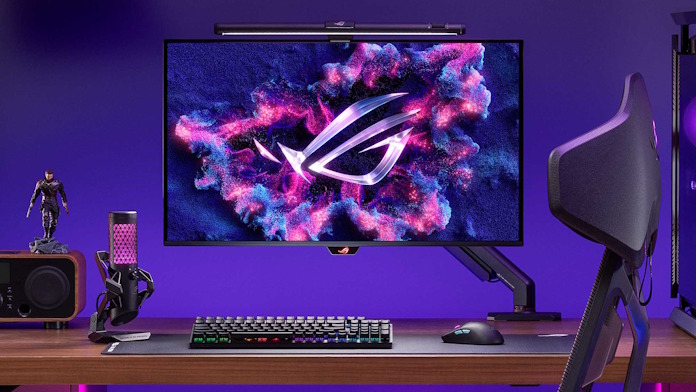
Like LCDs, there are a few variations of OLED panels. WOLED panels, like those in our ROG Strix OLED XG27AQDMG, offer incredible sharpness with the deepest blacks — especially when paired with our TrueBlack Glossy coating, like in the second-gen iteration of this display. QD-OLED panels, on the other hand, feature richer colors — perfect for gaming on a large display like our 32-inch ROG Swift OLED PG32UCDM. No matter which you pick, though, the resulting image is something special.
When it comes to LCD panels, black levels vary between the different types. If you choose an LCD with a VA-type panels, you’ll get deeper blacks than IPS, which is great for gaming in a dark room. And Mini-LED displays, with their independently dimmable zones, can also get near-perfect blacks just like OLED — but since they don’t dim on a per-pixel basis, they still won’t look quite as crisp as OLEDs, with a bit of “blooming” around bright objects. This can be mitigated by a high- quality dimming algorithm, though, and the high brightness of Mini-LED does give it an edge in highlight detail.
If you plan on playing games in HDR, you’ll definitely want a Mini-LED or OLED display for the best quality, since HDR relies on deep blacks and high peak brightness to really flex its muscle. Which you choose is up to your personal preferences.
Both display types (can) have incredibly smooth, clear motion
If you plan on gaming at super high refresh rates, you’ll also need to take into account the response time of a panel. Response time denotes how fast the display’s pixels can shift from one shade to another — too slow, and you’ll get a ghost-y trail behind moving objects. The faster the response time, the clearer motion will be, which is crucial when playing competitive games at high refresh rates.
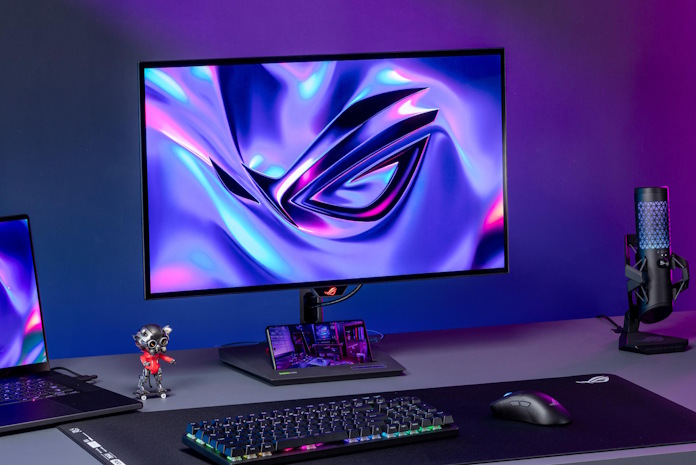
OLED panels have absolutely insane response times, making them perfect for this use case. Our ROG Swift OLED PG27AQDP features a blistering 480Hz refresh rate with a 0.03ms response time, while the ROG Strix OLED XG32UCWG uses a Dual Mode panel, which lets you choose between 4K at 165Hz or FHD at 330Hz, with that same 0.03ms response time. Motion will be so smooth and so clear that you’ll see every enemy before they even know you’re coming.
That said, this is one of the areas where LCD innovation has leapt forward in recent years. If you’re interested in an LCD panel but want to ensure you get the clearest motion possible, look for one of our Fast IPS panels like the ROG Strix XG27UCG. It also features a Dual Mode panel capable of 4K 160Hz or FHD 320Hz, with a 1ms response time that ensures smooth, clear motion during fast-paced gameplay.
Both panels are capable of bright images — but LCDs have the edge
In the past, brightness has been a mark in the win column for LCD displays. That large LED backlight has, traditionally, been capable of producing higher brightness, especially when showing an image that lights up the entire screen. OLED panels, on the other hand, have to dial back their overall brightness at least a little bit depending on how much of the screen is lit up, which could be troublesome for certain tasks or in well-lit rooms. But, as always, these statements come with a big helping of caveats.
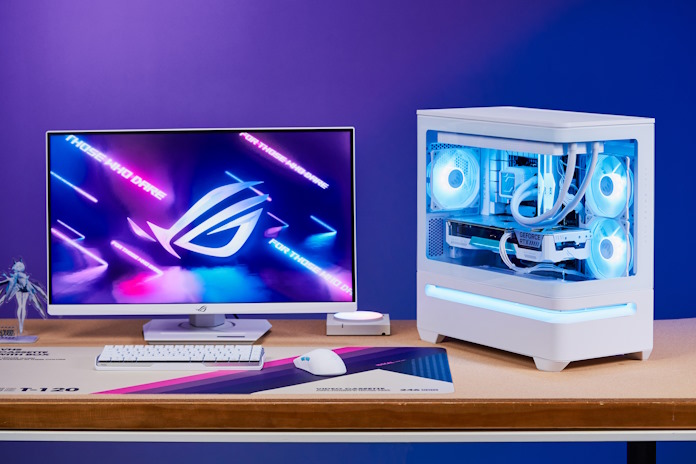
While LCD panels, on average, are capable of higher brightness levels, it depends heavily on the specific monitor you buy. More budget-oriented LCD panels may have a more limited brightness of 350 nits, while the latest Tandem OLEDs are capable of shining nearly as brightly in full-field scenes. We’ve also done a lot to ensure our OLED monitors perform their absolute best. Large heatsinks allow for higher brightness levels than models without this cooling, and our anti-glare solutions — like the aforementioned TrueBlack Glossy coating — minimize reflections that can wash out the image on-screen in a bright room.
In most cases, high quality LCD and OLED panels should produce plenty of brightness for most people, in most scenarios — at least when shopping from a trusted brand like ROG. But if you want the best brightness OLED currently offers, check out the ROG Strix XG27AQWMG, which uses one of those new Tandem OLED panels. But if you have a particularly bright room and find yourself constantly fighting glare, a high- quality LCD panel — especially a Mini-LED model like our ROG Swift PG32UQX — can push those nits to the max.
LCDs are a tried-and-true solution for any budget, while OLEDs provide the ultimate premium experience
Both LCD and OLED gaming monitors are capable of producing excellent image quality for all types of gaming. LCDs have been around for a while, but that just means we’ve had time to perfect them — with improvements to color performance, brightness, and response times, you can get an excellent display at a very affordable price that will last you a long time. If your budget lies under a few hundred bucks, you can’t go wrong with any of the latest ROG Strix or TUF Gaming LCD monitors.
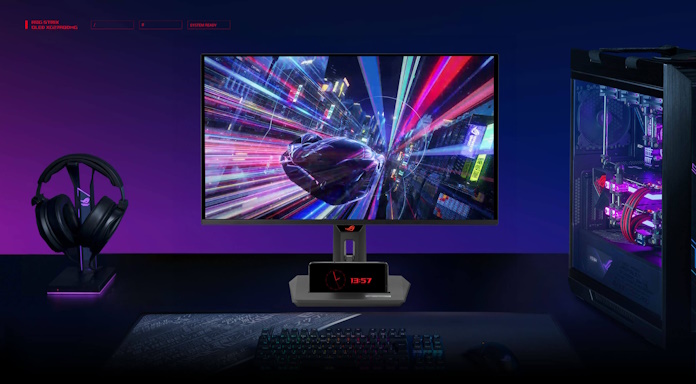
But if you want the ultimate premium experience, upgrading to an OLED will truly blow you away. If you held off on OLED in the early days for fear of burn-in, rest assured that modern OLED panels are much more resistant to degradation, especially when coupled with ROG innovations like large heatsinks, the Neo Proximity Sensor, and our OLED Care software features (not to mention a three-year warranty to give you peace of mind). You’ll also find OLED displays at more affordable prices than ever — while our ROG Swift line still offers the highest-end experience, ROG Strix OLEDs offer a great middle-of-the-road option that provide the incredible benefits of OLED without breaking the bank.
Whichever panel type you choose, choose ROG or TUF Gaming — and you’ll be set to game for years to come.

